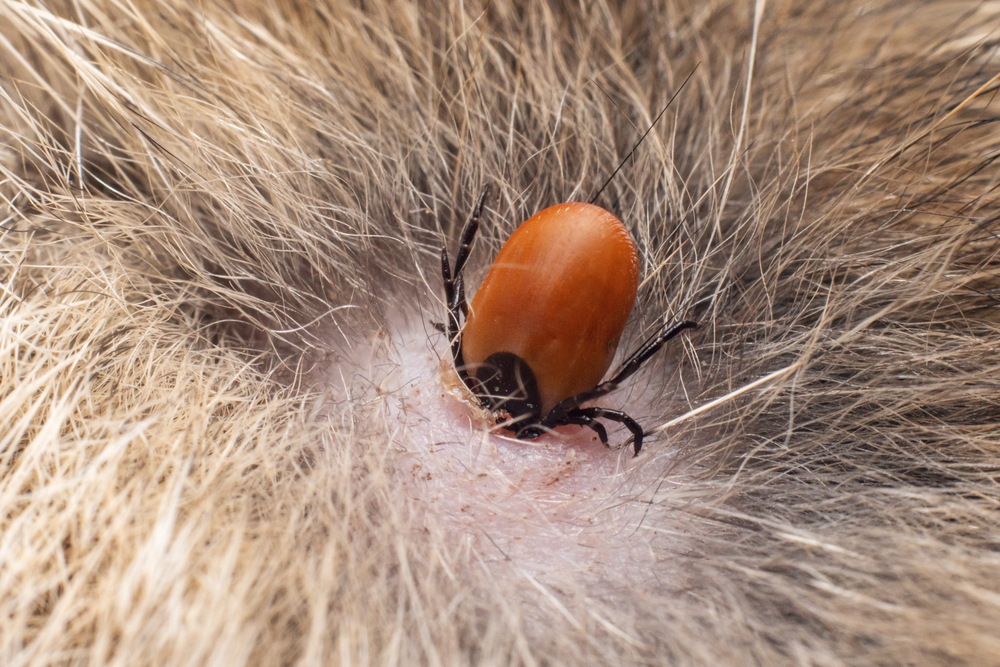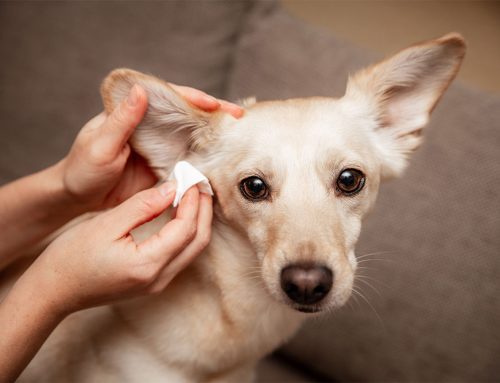If you discover a tick taking a blood meal from your pet, your first instinct may be to rip off the bug. But, if you proceed recklessly you might yank off a skin tag, or leave the tick’s head embedded in your pet’s skin. To remove a tick safely and effortlessly, follow our Oliver Animal Hospital team’s step-by-step tick removal guide.
Step #1: Know what you’re looking for on your pet’s skin
When checking your pet for ticks, knowing exactly what you are looking for is helpful. In general, tick larvae have six legs, whereas nymphs and adults have eight legs. Ticks often take on a grey sheen when engorged, but ideally, you should remove a tick from your pet’s skin before the bug takes a blood meal. The four most common tick species in south Austin include:
- Brown dog tick — Oval in shape, the brown dog tick is a reddish-brown color, and is 1/8 of an inch in length before feeding.
- American dog tick — Also oval in shape, the American dog tick is brown with white or grey markings. Before feeding, they are 3/16 of an inch in length.
- Lone star tick — The lone star tick gets its name from the single, silvery-white spot on the female’s back. These ticks are reddish-brown in color, and can reach 1/4 of an inch in length. This tick species is most likely to take a blood meal from people.
- Black-legged tick — Black-legged (i.e., deer) ticks are orange-brown in color, with dark legs. They have a broad oval shape, and are 1/8 of an inch in length.
Step #2: Gather tick-removal supplies before checking your pet’s skin
To avoid a mad scramble for supplies after discovering a crawling arachnid on your pet’s skin, gather your tick-removing essentials before you begin searching for these pests. Collect disposable gloves, paper towels, a tick-removal tool or tweezers, rubbing alcohol, a small container, and an antiseptic cleanser.
Step #3: Check your pet for ticks after being outside
After spending time outside, thoroughly check your pet for ticks. Comb through their fur and feel their skin for small lumps or bumps. Pay special attention to ticks’ favorite spots on your pet’s body:
- Under the collar
- In and around the ears
- Around the eyelids
- Between the toes
- Under the tail
- In the armpits
- In the groin
Step #4: Grasp the tick firmly to remove it from your pet’s skin
If you find an unattached tick crawling through your pet’s fur, nab it with a paper towel, and put it in a container filled with rubbing alcohol to kill it.
If you find a tick attached to your pet, proceed carefully to avoid squeezing the pest. When squeezed, a tick injects pathogens into your pet’s skin. To remove an attached tick safely, part the fur down to your pet’s skin. Then, use fine-tipped tweezers or a tick-removal tool to grasp the bug’s head, as close as possible to your pet’s skin. Using firm, steady pressure, pull the tick straight out. Do not twist or jerk the tick, because such movement can cause the bug’s body to separate from the head, and the head will remain embedded in your pet’s skin.
Step #5: Ensure that the entire tick is removed from your pet’s skin
After removing the tick, double-check to ensure you have removed it in its entirety from your pet’s skin. If the head or mouthparts remain embedded, your pet can develop a skin infection.
Step #6: Clean the bite wound on your pet’s skin
Use an antiseptic cleanser to disinfect the bite wound. If possible, clip the fur around the bite area, so you can monitor the wound closely as it heals.
Step # 7: Monitor your pet for infection or illness
Tick-borne illnesses can take weeks to months for signs to manifest. In some cases, pets may not develop any illness signs. Your pet may have contracted a tick-borne disease if they exhibit the following signs:
- Fever
- Lethargy
- Lameness
- Swollen joints
- Enlarged lymph nodes
Tick-borne diseases can cause your pet to experience various health issues, including bleeding and bruising issues, neurologic conditions, and kidney failure. Be on the lookout for any illness signs in your pet.
Step #8: Prevent ticks from reattacking your pet

If you find a tick on your pet, you know there are gaps in their protection. Keep your four-legged friend safe from tick-borne disease by regularly administering their year-round tick preventive medication, and talk to our team about vaccinating your dog for Lyme disease. When out walking your pet, avoid heavily wooded areas, or spots that have tall grass and brush. To discourage ticks and small mammals from making your yard their home, keep your lawn cut short, and prevent leafy debris from piling up.
Ticks can transmit a multitude of harmful diseases to your pet. Keep them safe by ensuring they regularly receive their year-round tick preventive medication. Give our south Austin Oliver Animal Hospital team a call to discuss which tick preventive is best for your pet.








Leave A Comment